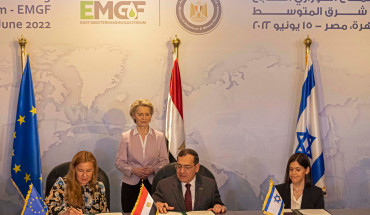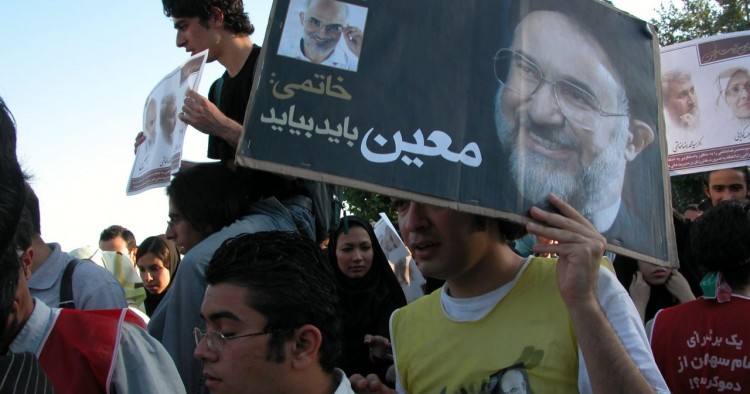This essay focuses on the differences between the pre- and post-revolutionary periods in legal interpretations regarding the treatment of female sexuality in marriage and its implications for the freedom of labor and the autonomy of women. I argue that under the monarchy, the theoretical commoditization of female sexuality in marriage was treated as negotiable and modifiable. By contrast, the Islamic Republic has treated the issue as non-negotiable and has reinforced it through the enhancement of women’s entitlements in marriage. This reinforcement, combined with a growing emancipation in economic, political, and social aspects, has thus given rise to contradictions and increased female activism unparalleled in the region.
The source of this contradiction can be found in the ambiguity in early Muslim tradition influenced by nomadic tribal customs (allowing women power and control) versus urban merchants (secluding and treating women as property). In essence a Muslim marriage (aqd) is a sale contract. The woman makes the offer (ijab) and the man accepts (qabul). The object of sale is female sexuality and reproductive labor. In exchange the woman receives a dower (mahryyeh) and financial support (nafaqeh). If capable of meeting the financial obligations, a man may practice polygamy. The marriage contract also may include additional provisions that should be agreed upon by the two sides. This commoditizing contractual aspect can be attributed to the merchant tradition.
By contrast, early traditions encompassed autonomous aspects that may be attributed to nomadic influence. According to these traditions, woman has the right to own and inherit property independently and no prohibitions exist for participation in the labor market. Moreover, the Qur’an explicitly states that working women are entitled to fair wages. Indeed, the Prophet’s first and highly revered wife, Khadija, was a merchant; and his granddaughter, Zaynab, publicly challenged Caliph Yazid. It can be argued that Islam allows for the involvement of women in public life as well as the market.A woman and her sexuality, however, are not separate. Therefore, the theoretical sale of sexuality, the provision of autonomous rights, and the exemplary lives of revered women create ambiguity in the rights and autonomy of women and allow for interpretations ranging from near complete ownership and control (a common practice in pre-modern urban areas), versus a purely symbolic treatment of ownership of sexuality and an emphasis on autonomy and public participation. An important development of the modern era has been a growing tendency to perceive women as agents who possess potential or actual labor that can positively contribute to public life and society at large.
This perception of women as productive labor became pronounced in the 1960s and 1970s. Iran’s official government documents explicitly referred to women as “a relatively untapped supply of labor” that should be utilized for development. Government policies aimed at removing or revising the traditional barriers to education and labor market participation. The reforms modified the legal commoditization of female sexuality. Prohibition of child marriage, as well as equal parental rights in child custody undermined a father’s ownership of his children and by extension that of his wife’s reproductive labor. Limitations on polygamy, the modification of a man’s unilateral right to divorce, and improvements in women’s rights to divorce altered the commoditization of sexuality in marriage. Furthermore, the enfranchisement of women, along with their growing participation in the public space, labor market, and education constituted a trend toward the emancipation of women.
By contrast, the post-revolutionary changes have reinforced legal commoditization. The return of child custody to the father, the legalization of child marriage, the shift from an obligatory to the voluntary and contractual limitation on polygamy, the confirmation of men’s unilateral right to divorce, and the increased difficulties for women to obtain divorce have reinforced the male ownership of female sexuality. As compensation, however, new provisions such as inflation adjustments for the mahryyeh and an emphasis on the legal rights of married women to nafaqeh are aimed at guarding the sale and upkeep values of female sexuality.
There also has been an explicit recognition of the productivity of female labor at home and the introduction of entitlements for household labor. Arguing that a marriage contract does not require women to perform household labor, that mahryyeh and nafaqeh are compensations for female sexuality and reproductive labor only, and that child-raising and household labor are the primary responsibilities of a married woman, new entitlements have been introduced. Post-Revolutionary marriage contracts include a stipulation of a divorcing to share up to 50% of the wealth accumulated by the husband during the marriage. The acceptance of this condition by the husband is voluntary: If the condition was not included, at divorce the woman is entitled to the wage-equivalent (ojrat-ol-mesl) of the household labor performed during the marriage. These entitlements, however, apply only if a man initiates the divorce and, in practice, are far less than the 50% limit or the forgone wages.
As justification, the ruling clergy argue that the traditional marriage contract does not provide financial rewards for household activities, and therefore they are a part of the new reforms. It is worth noting that nafaqeh and the new entitlements are used as justifications for maintaining the law that requires the husband’s permission for a married woman to work outside the home. While this law predates the Revolution, since then its enforcement has been strengthened. It is argued that men pay nafaqeh and ojrat-ol-mesl; therefore, they are entitled to control over women’s time. Thus, a married woman is not a full owner of her labor and has legal constraints on her participation in the labor market.
The Revolution brought masses of women to the streets and encouraged them to be politically active. Initial attempts to force women out of the labor market proved impractical and were faced with resistance. While secular women view forced veiling as an infringement of their freedom, veiling undermined family opposition to female participation in public space for many women from religious families. Today the gender-gap in education has been substantially reduced, and in recent years 60% of all university graduates have been females. Compared to the pre-revolutionary period, the official data do not show a significant increase in women’s share in the labor force. But they indicate that the participants have much higher education and skills and are involved in wide-ranging professional, managerial, and entrepreneurial activities. There are also indications that the official data underestimate women’s participation rates, and that there is a large and unaccounted female informal economy that includes educated and professional women
In summary, in comparison to the pre-revolutionary period, Iranian women have substantially increased their levels of education, economic power, political awareness and participation, and overall presence in public space. Legally, however, their subservience to male dominance within the family has increased. It is worth noting that the legal reforms under the Shah were based on new interpretations of Islamic law and were sanctioned by a group of the ‘ulama’, although opposed by Ayatollah Khomeini and some other members of the clergy. Today a segment of the ‘ulama’ believe that even far-reaching and sweeping egalitarian gender legal reforms are not contrary to Islam (www.we-change.org). So far, however, despite concessions and compromises on some other aspects, the ruling clergy has treated the legal commoditization of female sexuality as non-negotiable. Thus, the original Islamic ambiguity in women’s status evolved into a contradictory and inherently unstable development of emancipation and legal subordination.
The Middle East Institute (MEI) is an independent, non-partisan, non-for-profit, educational organization. It does not engage in advocacy and its scholars’ opinions are their own. MEI welcomes financial donations, but retains sole editorial control over its work and its publications reflect only the authors’ views. For a listing of MEI donors, please click here.













